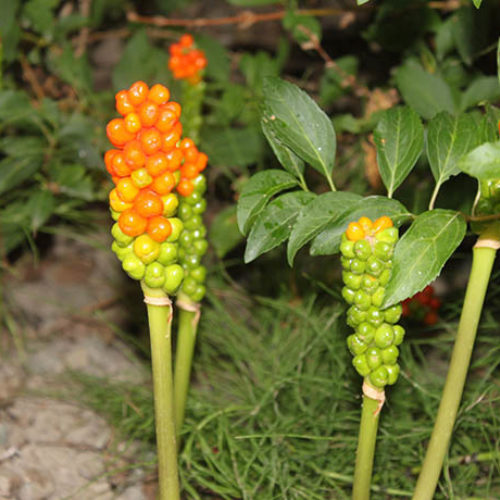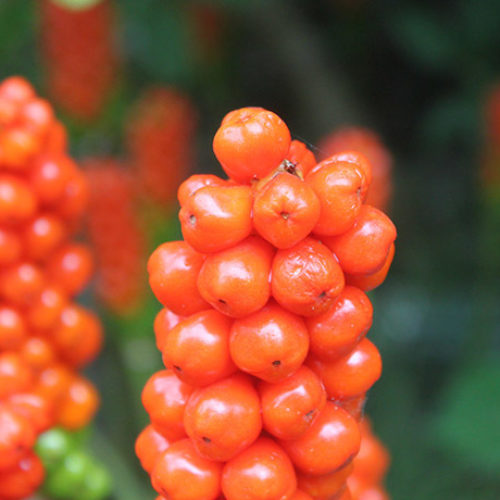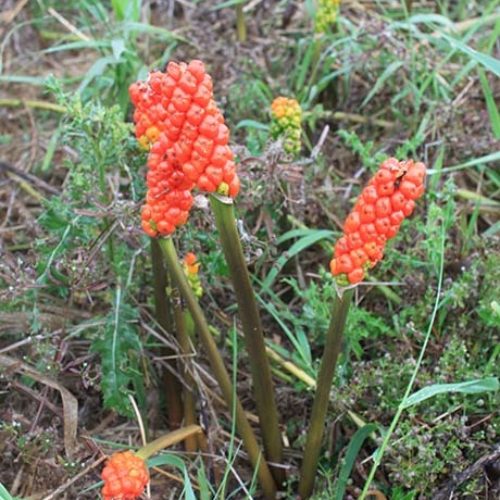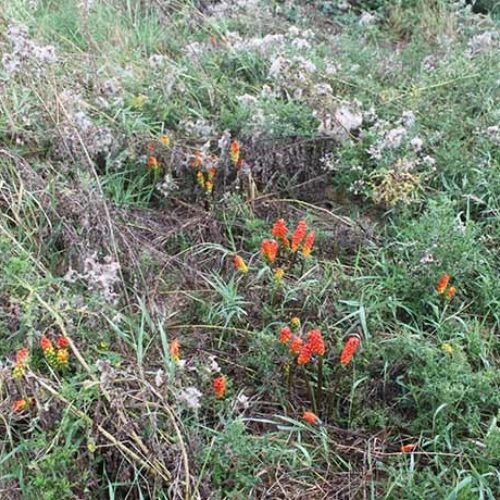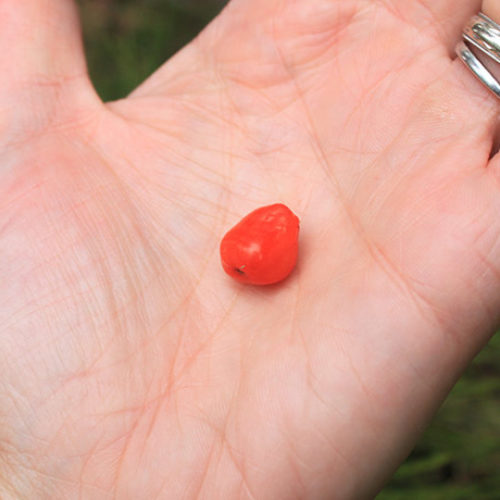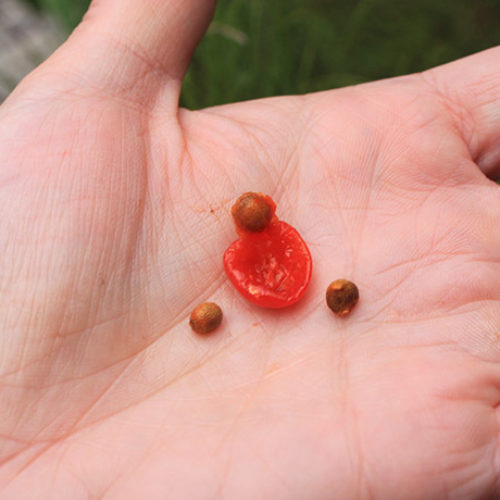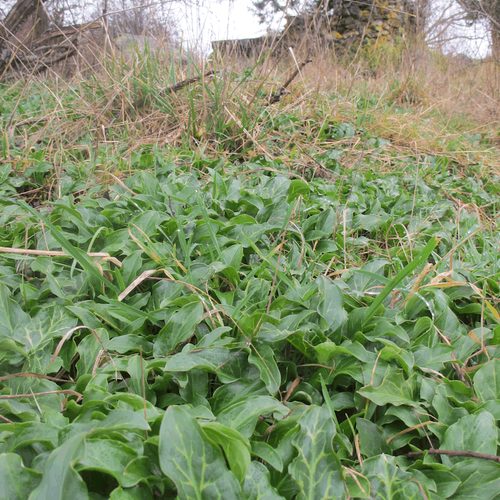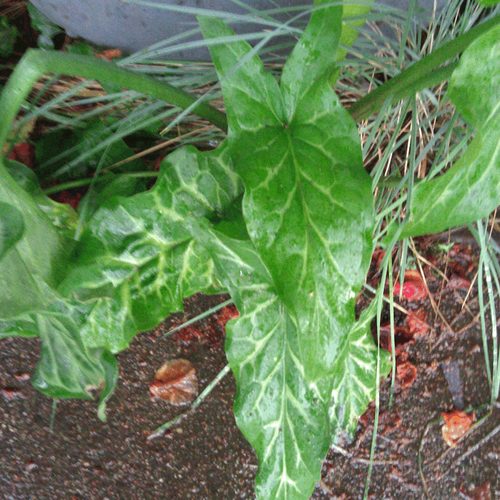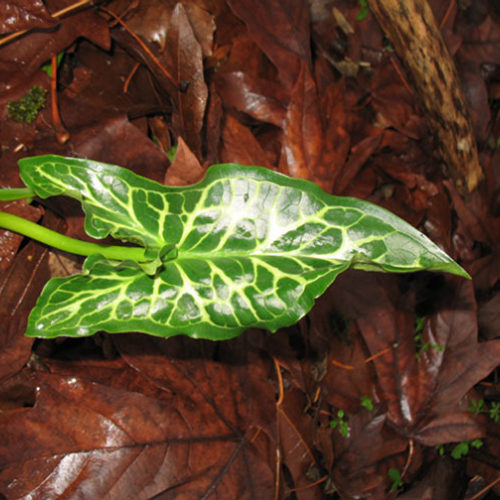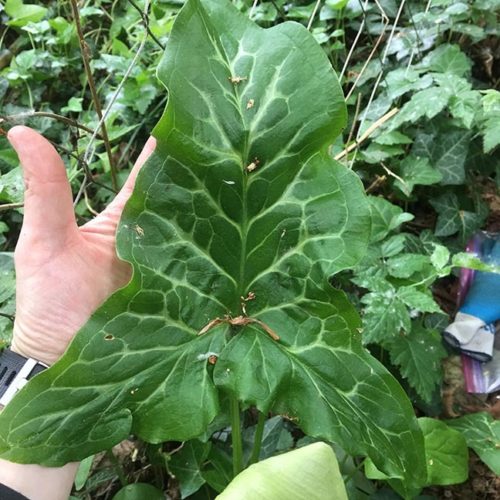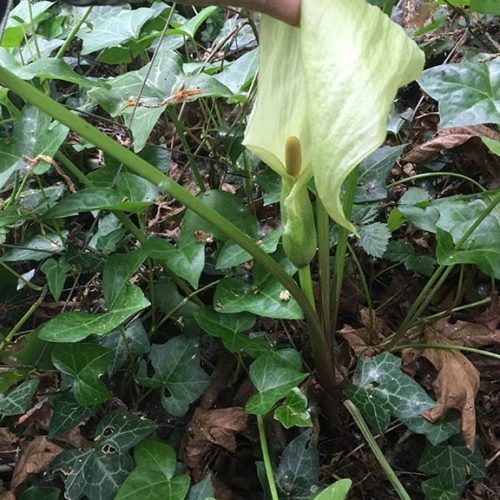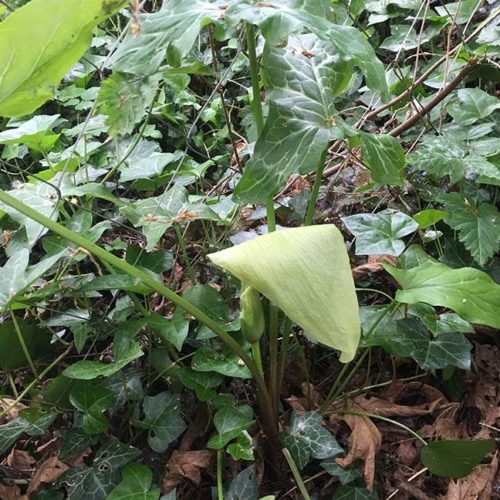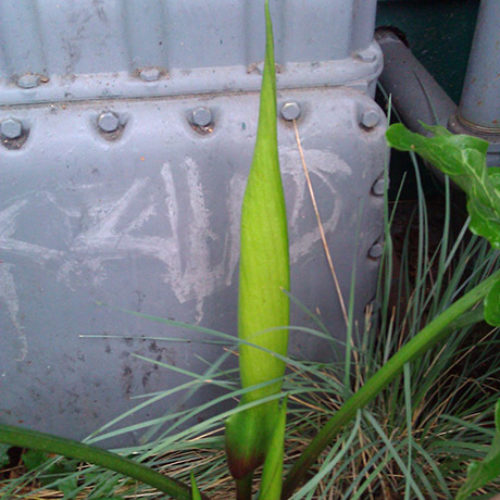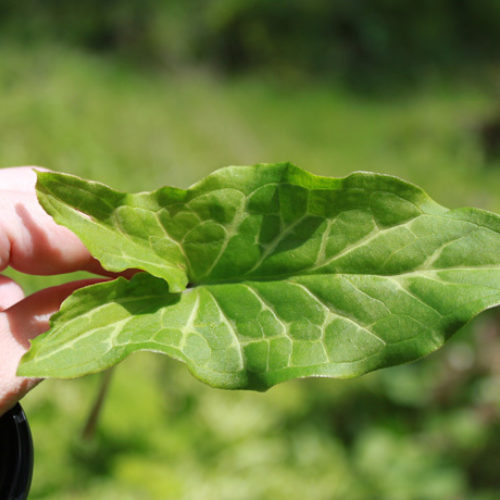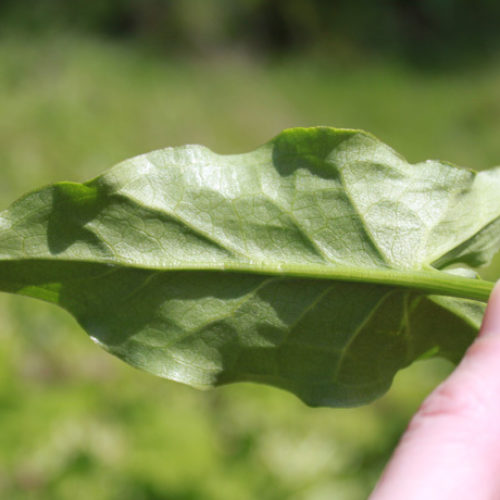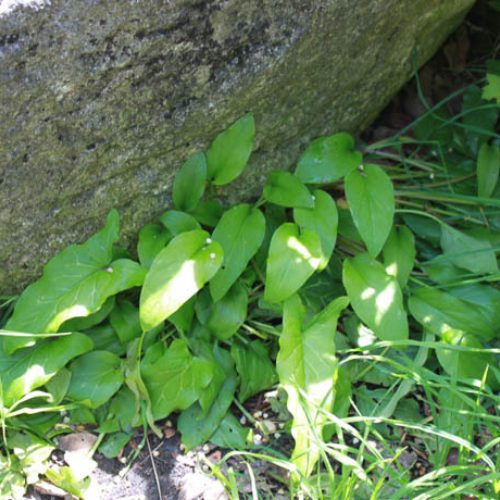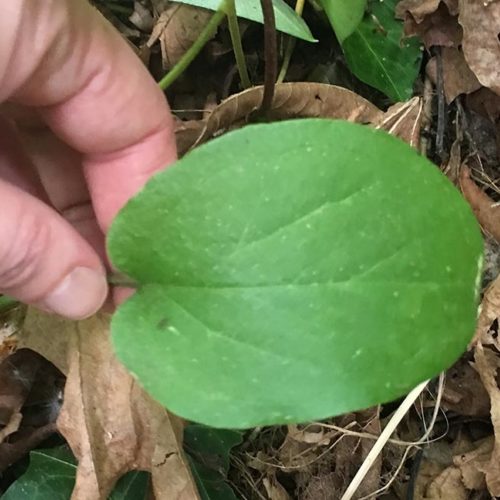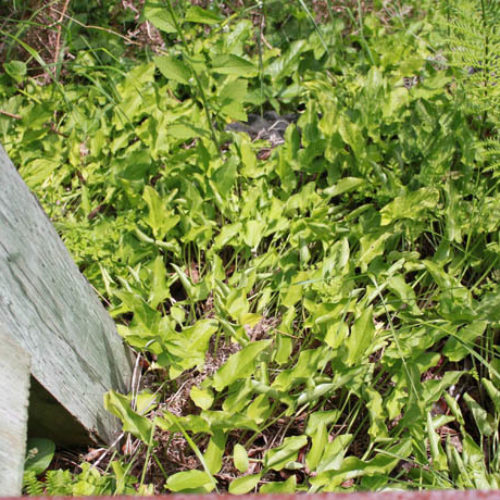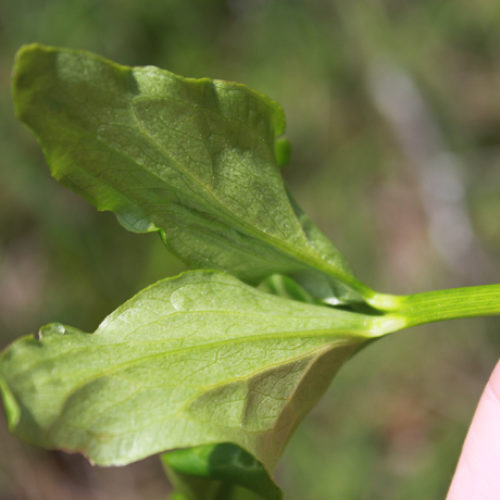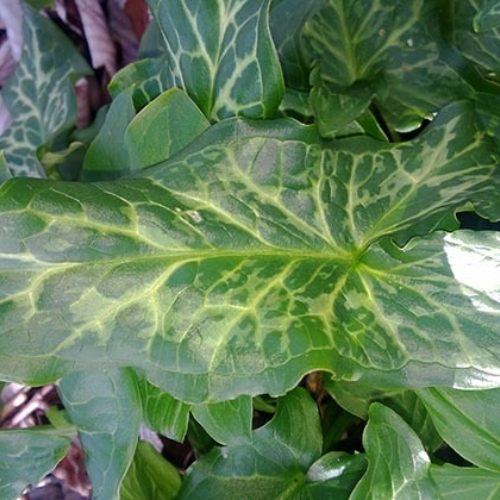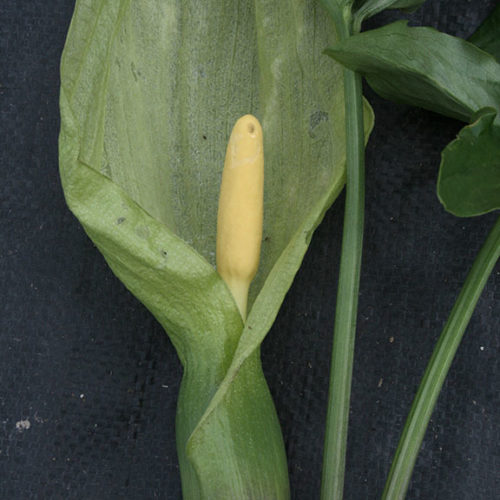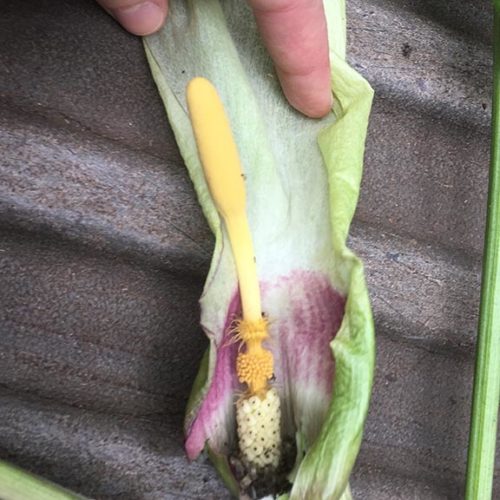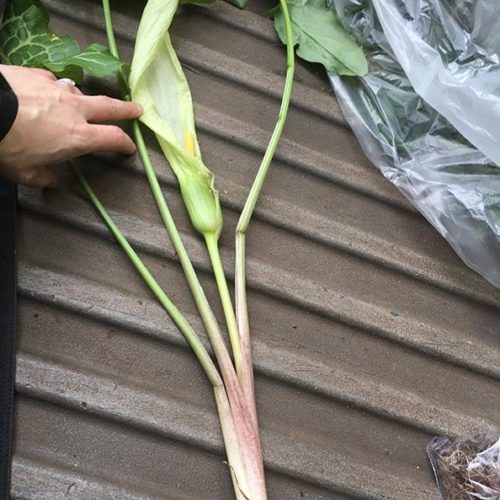Italian Arum
Arum italicum
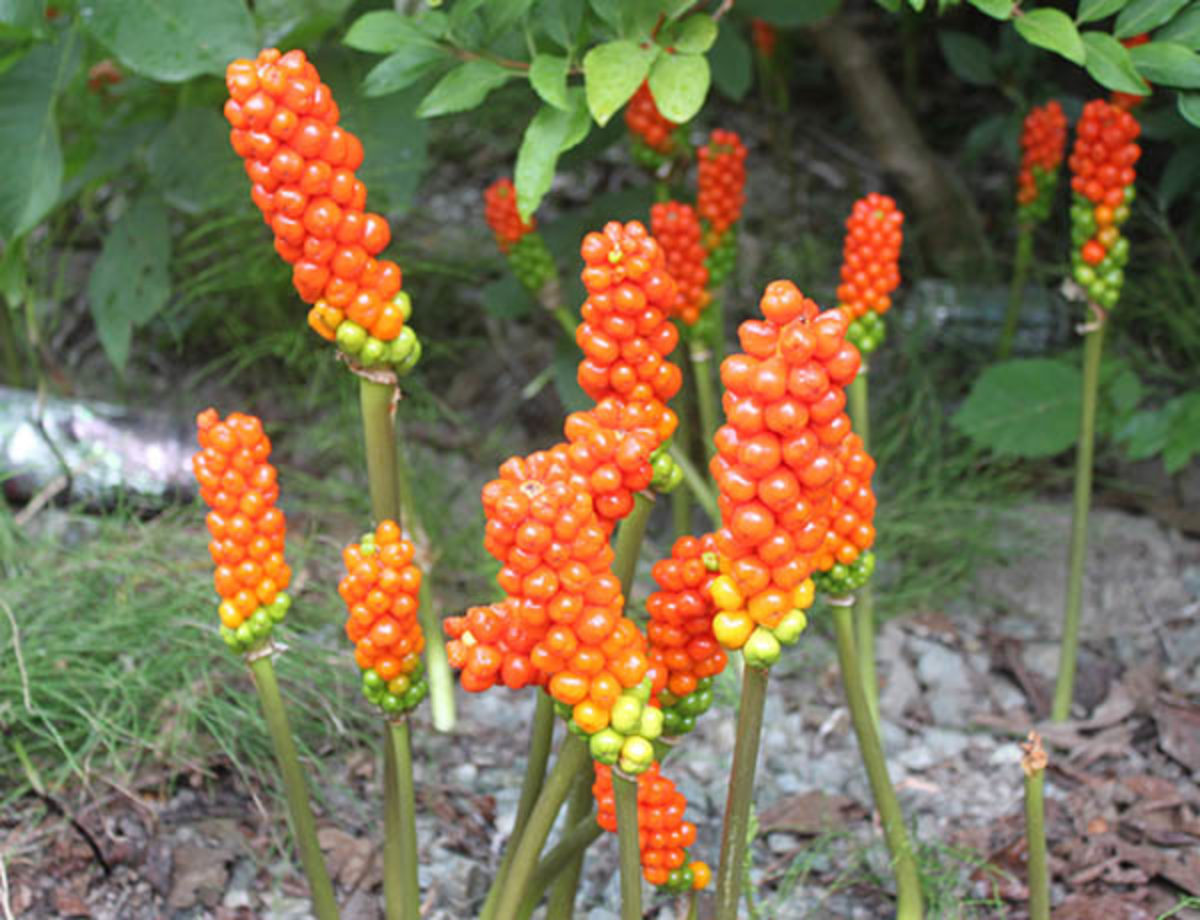
Family: Araceae
Other Common Names: Italian lords and ladies, Italian Lily, Cuckoo’s Pint
Weed class: C
Year Listed: 2015
Native to: Asia, Europe and Northern Africa
Is this Weed Toxic?:
humans, livestock
Legal listings:
This plant is also on the Washington State quarantine list. It is prohibited to transport, buy, sell, offer for sale, or distribute plants or plant parts of quarantined species into or within the state of Washington or to sell, offer for sale, or distribute seed packets of seed, flower seed blends, or wildflower mixes of quarantined species into or within the state of Washington. Please see WAC 16-752 for more information on the quarantine list. For questions about the quarantine list, contact the Washington State Department of Agriculture's Plant Services Program at (360) 902-1874 or email PlantServices@agr.wa.gov.
Why Is It a Noxious Weed?
Italian arum is a nonnative perennial that was originally introduced as an ornamental plant. It has now naturalized in a number of counties in Western Washington and appears to be spreading more rapidly as additional infestations are being discovered. Due to it establishing in riparian areas and other habitats, its toxicity, and being very difficult to control once established, it is a Class C noxious weed to raise awareness and promote its control.
How would I identify it?
General Description
Italian arum is a perennial, herbaceous plant that grows from tubers. Numerous tubers are produced during the growing season.
Flower Description
Flowers are made up of a spathe and spadix. They emerge and bloom in late April to June and give off a displeasing odor.
Leaf description
Leaves emerge in the fall to late winter and die back in the summer. Leaf blades are arrowhead-shaped, green and may have cream, silver-gray or other colored veins and markings. Leaves on young plants may be more oval in shape.
Fruit Seed Description
Fruit is a orange-red berry. Berries are in tight, oblong clusters.
Where does it grow?
Please click here for a county level distribution map for Italian arum in Washington.
How Does it Reproduce?
Italian arum reproduces by seeds and vegetatively by tubers.
How Do I Control It?
In general, Italian arum it noted to be difficult to eradicate once it has established in an area. Make sure to wear gloves and clothing to avoid skin contact with Italian arum as plant parts may cause skin irritation, which can be severe for sensitive individuals. Do not move soil with Italian arum to new locations or to compost piles as tubers may be spread and start new infestations.
Manual/Mechanical Control: Carefully digging around the stem, all the way down to the tuber, removing the tuber and daughter tubers, and disposing the tubers in a sealed bag in the garbage, can provide some control after many years. Take care to avoid disturbing neighboring plants, which may be providing some competition for resources, as much as possible. Cutting and bagging the stems with berries will prevent seeds from being spread and beginning new infestations.
Chemical Control: Herbicide information is limited for Italian arum. Using a tank mixture or alternating products in follow-up treatments might be more effective than using just one product. Always read and follow the label instructions before applying any herbicides for proper rate, treatment sites, and timing. Please refer to the PNW Weed Management Handbook, or contact your county noxious weed coordinator.
For More Information
See our written findings for Italian arum (Arum italicum)
See our brochure on Italian arum
Whatcom County Noxious Weed Control Board's information on Italian arum



